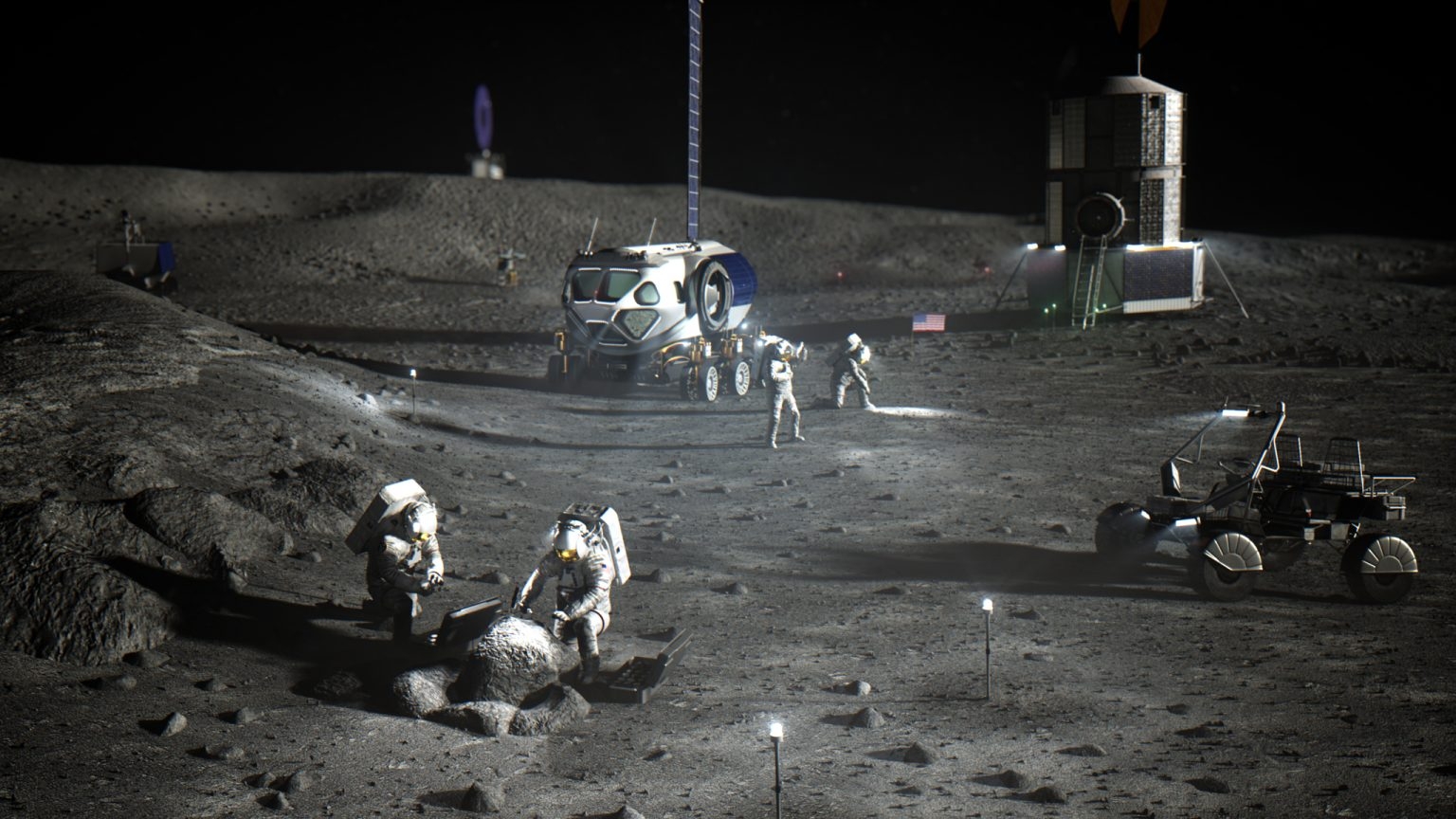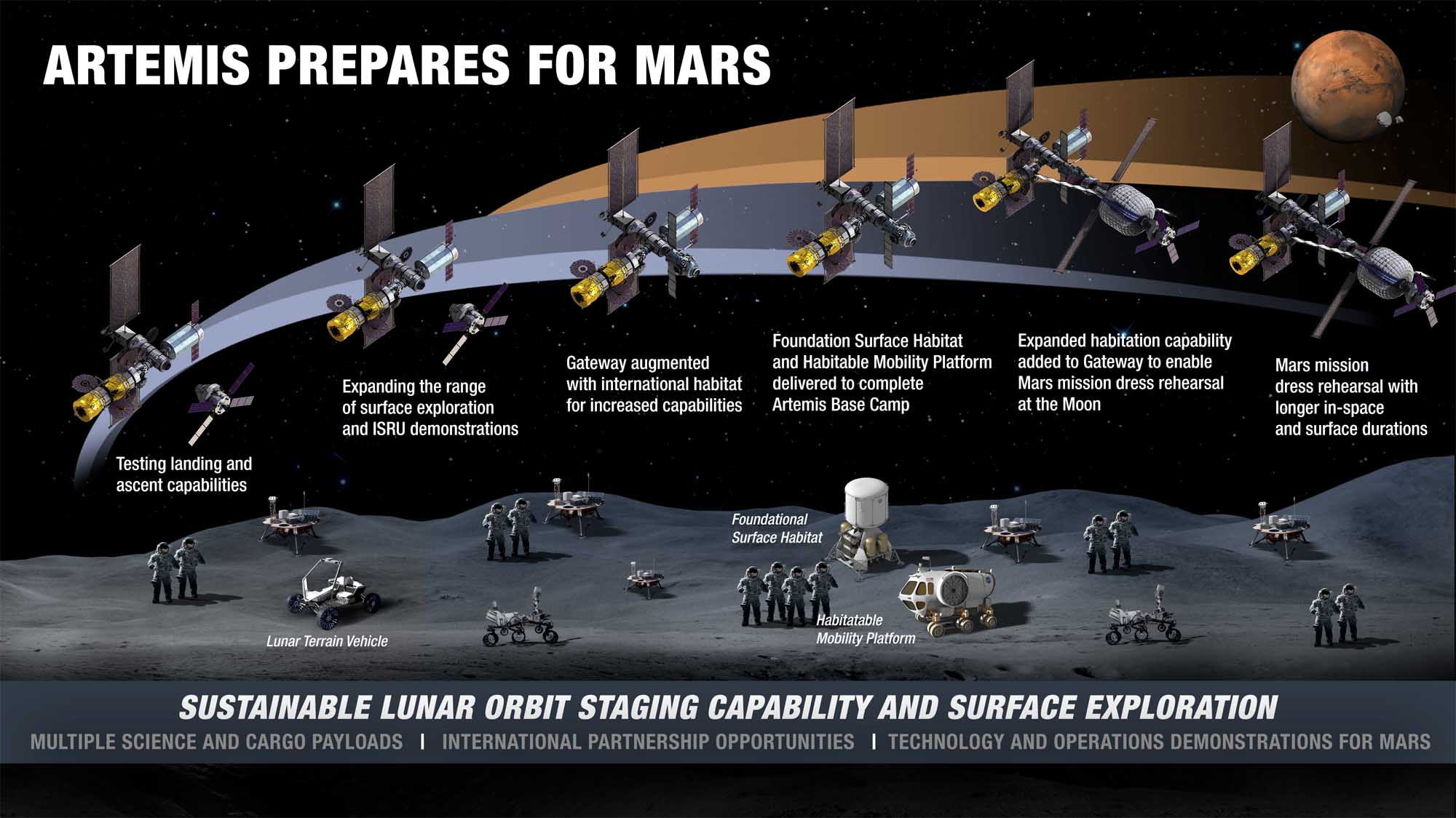
COLORADO SPRINGS, Colo. — NASA's goal of returning astronauts to the moon by 2025 has long been part of a long-term plan to build a sustainable base on the lunar surface. But that plan may include more moon bases than you might expect.
Jim Free, NASA's associate administrator for exploration systems development, said Monday (April 17) that the agency's Artemis program may ultimately build several bases around the moon instead of a single Artemis Base Camp at the lunar south pole as unveiled in 2020.
"It's really hard to say we're going to have a single base camp," Free told reporters here in a briefing at the 38th Space Symposium. "Because if we miss a launch window, we might have to wait a month to go back to that place."
Related: Everything you need to know about NASA's Artemis program
Instead, NASA may work with its international partners to establish a series of moon camps spread across the lunar surface to maximize science and exploration. The agency, Free said, is studying whether it is a better idea to have a distributed approach with multiple moon bases, including some potentially contributed by international partners like the European Space Agency, Canada or Japan, who have all signed on as Artemis program partners.
"So we can maybe have two or three sites to go to that help our science diversity, because the reason we're doing Artemis in the first place is for science," Free said.

NASA's Artemis Base Camp called for a primary moon base at the lunar south pole, possibly at Shackleton Crater, which has long been on the agency's candidate list to explore on an Artemis mission because it is known to harbor water ice in its shadowed regions. The base would serve as a hub for crewed Artemis moon landings and support a team of four astronauts for up to a week at a time.
Under the Base Camp plan, the habitat would include power infrastructure, radiation shielding, facilities for waste disposal and a landing pad for visiting crews. It would also be home to a lunar rover that astronauts could drive around the moon and a "habitable mobility platform" that crews could use to visit other locales on the moon for up to 45 days at a time.
But having multiple, smaller Artemis bases on the moon may yield better science and access to the lunar surface, Free said Monday. However, NASA won't be building those extra habitats anytime soon, he added.
NASA's next Artemis mission is Artemis 2, which will launch four astronauts around the moon no earlier than November 2024. NASA unveiled the crew of Artemis 2 earlier this month. The first crewed Artemis moon landing, the Artemis 3 mission, is slated for sometime in 2025.
"Artemis 3 is get the crew down, let them stay for six and a half days and get them back," Free said. "And we're slowly going to build the time that we will have the crew spend, and then the number of crew, on the surface."
As those longer and bigger missions develop, NASA hopes to send lunar rovers for Artemis astronauts to drive on the moon, starting with an unpressurized rover and leading to a truck-like pressurized vehicle. Japan's space agency has teamed up with Toyota to build such a moon truck. A permanent habitat would then follow for rotating crews, Free said.
"So we're probably looking at the later missions, like [Artemis] 7, 8 and 9, where we're starting to look at adding permanent habitation on the surface," he added.
On Tuesday (April 18), NASA's deputy administrator Pam Melroy will speak at the Space Symposium to "discuss progress toward a blueprint for sustained human exploration throughout the solar system," NASA has said. You can watch that speech, called "Our Next Steps to the Moon and Beyond," on NASA TV and YouTube.
It will detail NASA's planned architecture for Artemis moon missions, plans for Mars and beyond, Free said.
Email Tariq Malik at tmalik@space.com or follow him @tariqjmalik. Follow us @Spacedotcom, Facebook and Instagram.







